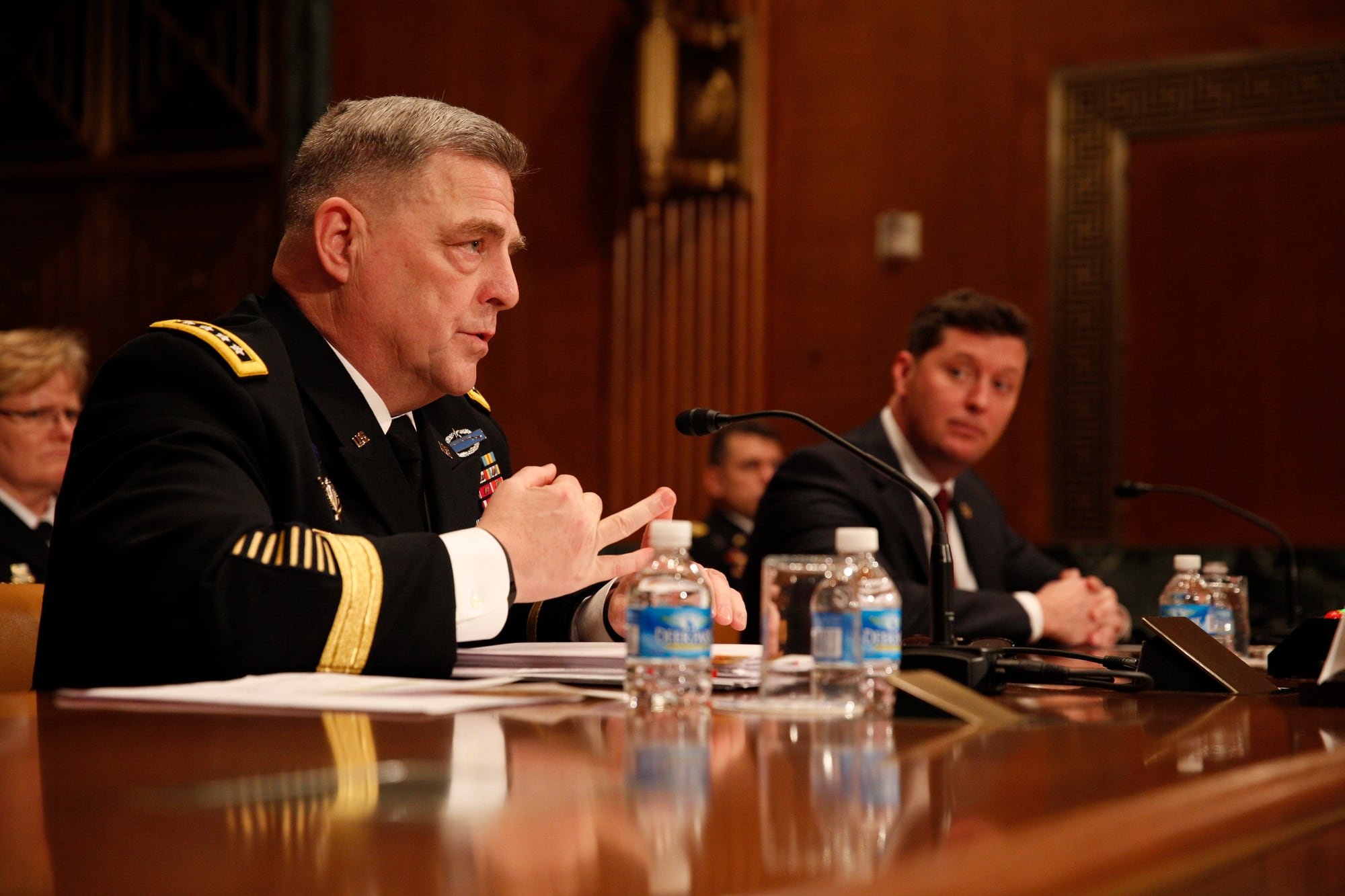Ongoing budget cuts have forced the Army to only focus on the fights it might face today, the service's top leaders said Wednesday on Capitol Hill.
"Ignoring readiness shortfalls puts our nation at great risk. The choice to focus on near-term readiness has risk," said Acting Army Secretary Patrick Murphy. "We're mortgaging our future readiness because we have to ensure success in today's battles."
Army Chief of Staff Gen. Mark Milley, who testified alongside Murphy, agreed, saying that "while the Army prefers investment in both future and current readiness," it is focused on the threats or contingencies the force might face in the short-term.
In their remarks to the Senate Appropriations Committee's subcommittee on defense, Murphy and Milley cited the growing threat of radical terrorism, a revanchist Russia, a rising China and provocative North Korea as reasons why there are more than 190,000 soldiers committed in 140 countries around the world.
Both men have said that readiness is their top priority as the Army reduces its end-strength — down to 450,000 in the active Army — while flexing to meet the demands and needs of combatant commanders around the world.
The Army's fiscal year 2017 budget request totals $148 billion, which is $1.4 billion less than the amount enacted in fiscal 2016. The budget request, released Feb. 9, pays for an end-strength of 460,000 in the active Army, 335,000 in the Army National Guard, and 195,000 in the Army Reserve.
That's a cut of 15,000 soldiers in the active component, 7,000 in the Guard, and 3,000 in the Reserve between 2016 and 2017.
In a bid to save more money, both Murphy and Milley asked Congress on Wednesday to consider another round of base closures.
"Let us manage your investments," Murphy said, adding that the effort would result in $500 million in savings and a return on investment within five years.
Milley also asked for the lawmakers' support to man the Army's combat formations and sustain combat training center rotations. On its part, the Army also plans to continue streamlining its headquarters units and elements, he said.
"We request your support for enactment of our budget as proposed," Muphy said.

Acting Secretary of the Army Patrick Murphy and Army Chief of Staff Gen. Mark Milley testify about the FY17 Army budget request on Feb. 24, 2016, at the Senate Appropriations Defense Subcommittee in Washington.
Photo Credit: Mike Morones/Military Times
The 2017 budget request "prioritizes readiness," Milley said. He added that after almost 15 years of "continuous counter-insurgency operations and budget shortfalls," there is a gap in the Army's ability to conduct high-end combat operations.
"While we cannot forecast precisely when and where the next contingency should arise, it is my professional opinion … that it'll require a significant commitment of Army ground forces," Milley said.
When asked if maintaining an Army end-strength of 480,000 in the active force, 350,000 in the Guard and 205,000 in the Reserve would help the service better meet its readiness goals, Milley was cautious in his response.
"The short answer would be sure, I think that having increased numbers would help out with readiness, but if, and only if, we had the money to support that," he said.
The Army's end-strength is going down because "that's the size force, balanced with modernization and readiness, we can afford given that top line" in the budget, Milley said.
"If more money were available and we could increase the size of the force, that would be great," he said. "I want to caution, though, that numbers aren't everything. Quality matters. The size of a given force is important, as quantity has a quality all its own, but that is one of many factors to determine outcomes in ground combat."
The Army also continues to study the 63 recommendations released by the National Commission on the Future of the Army.
The service is running a cost-benefit analysis on the recommendations, Murphy said.
"Our initial sense is we like what we've been reading so far," Milley said, adding that maybe 10 to 15 of the recommendations "come with a pretty heavy price tag, so we've got to take a look at those."
There are also "a few" recommendations "we don't think are worth pursuing, Milley said.
"We're going through that very deliberately," he said. "[Army leaders from all three components] will consider all the recommendations in detail, go through all the rigor, all the math, all the details, and come back to Congress."
Michelle Tan is the editor of Army Times and Air Force Times. She has covered the military for Military Times since 2005, and has embedded with U.S. troops in Iraq, Afghanistan, Kuwait, Haiti, Gabon and the Horn of Africa.




